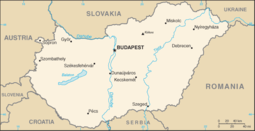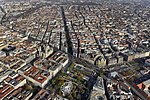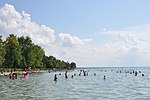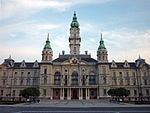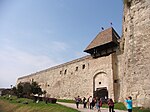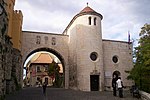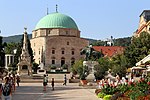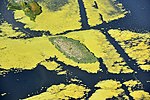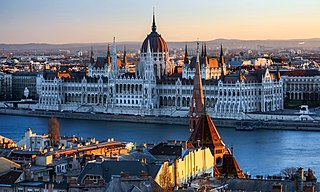
Budapest is the capital and most populous city of Hungary. It is the ninth-largest city in the European Union by population within city limits and the largest city on the Danube river; the city has an estimated population of 1,752,286 over a land area of about 525 square kilometres. Budapest, which is both a city and county, forms the centre of the Budapest metropolitan area, which has an area of 7,626 square kilometres and a population of 3,303,786. It is a primate city, constituting 33% of the population of Hungary.

A tourist attraction is a place of interest that tourists visit, typically for its inherent or an exhibited natural or cultural value, historical significance, natural or built beauty, offering leisure and amusement.
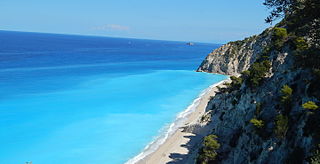
Tourism in Greece has been a key element of the economic activity in the country, and is one of the country's most important sectors. Greece has been a major tourist destination and attraction in Europe since the 1970s for its rich culture and history, which is reflected in large part by its 18 UNESCO World Heritage Sites, among the most in Europe and the world as well as for its long coastline, many islands, and beaches.

Tourism in Croatia is a major industry of country's economy, accounting for almost 20% of Croatia's gross domestic product (GDP) as of 2021.
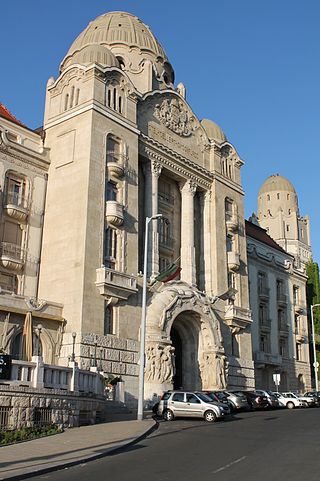
The Gellért Thermal Baths and Swimming Pool, also known simply as the Gellért Baths, is a bath complex in Budapest in Hungary. It is part of the famous Hotel Gellért in Buda.

Gellért Hill is a 235 m (771 ft) high hill overlooking the Danube in Budapest, Hungary. It is located in the 1st and the 11th districts. The hill was named after Saint Gerard who was thrown to death from the hill. The famous Hotel Gellért and the Gellért Baths can be found in Gellért Square at the foot of the hill, next to Liberty Bridge. The Gellért Hill Cave is also located on the hill, facing the hotel and the Danube.

Rudas Bath or Rudas fürdő is a thermal bath in Budapest, Hungary which is claimed to have medicinal properties. It was founded in 1571/1572 during the time of Ottoman rule. To date, it retains many of the key elements of a Hammam, exemplified by its Ottoman dome and octagonal pool. It is located at Döbrentei tér 9 on the Buda side of Erzsébet Bridge. The bath has six therapy pools and one swimming pool where the temperature is in between 10 and 42 °C. The components of slightly radioactive thermal water includes sulfate, calcium, magnesium, bicarbonate and a significant amount of fluoride ion. A sight-seeing brochure claims the water can help to treat degenerative joint illnesses, chronic and sub-acute joint inflammations, vertebral disk problems, neuralgia and lack of calcium in the bone system.

Tourism in Bosnia and Herzegovina is a fast-growing sector making up an important part in the economy of the country.

Central Hungary is one of the seven statistical regions in Hungary. It includes Budapest and Pest County.

Tourism in Slovakia offers natural landscapes, mountains, caves, medieval castles and towns, folk architecture, spas and ski resorts.

The Gellért Hill Cave is part of a network of caves within Gellért Hill in Budapest, Hungary. The cave is also referred to as "Saint Ivan's Cave", regarding a hermit who lived there and is believed to have used the natural thermal water of a muddy lake next to the cave to heal the sick. It is likely that this same water fed the pools of the old Sáros fürdő, now called Gellért Baths.

Oman is a country on the Arabian Peninsula. Tourism in Oman grew considerably during the 2000s, and a 2013 report predicted that it would become one of the largest industries in the nation. In 2019, Oman attracted about 4.1 million visitors from around the world, a massive increase from 3.1 million in 2017 as per the 2019 Tourism Statistic Bulletin from the National Centre for Statistics and Information (NCSI), Oman.
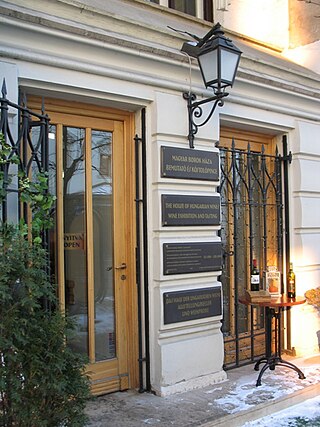
The House of Hungarian Wines was a wine shop in Budapest, near the Buda Castle.

Tourism is an important part of the economy of Réunion, an island and French overseas departement in the Indian Ocean. Despite its many tourism assets, the island's tourist attractions are not well known.

The following lists of tourist attractions include tourist attractions in various countries.

Egerszalók is an open-air spa and village in Heves County in northeastern Hungary. The springs yield 68 °C. mineral water from an aquifer located under the volcanic Mátra Mountains. The spa is located 8 km west of the county seat of Eger, from which it is served by motorbus.
Thermal baths or spas in Budapest are popular tourist attractions as well as public comforts for the city's residents.
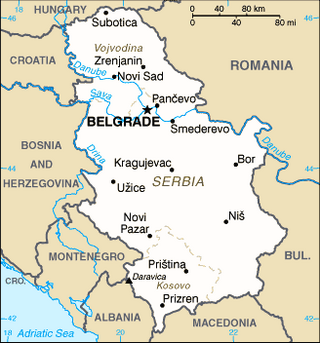
Tourism in Serbia is officially recognized as a primary area for economic and social growth. The hotel and catering sector accounted for approximately 2.2% of GDP in 2015. Tourism in Serbia employs some 75,000 people, about 3% of the country's workforce. In recent years the number of tourists is increasing, especially foreign ones for about hundred thousand arrivals more each year. In 2019, tourism generated an income of nearly $1.698 billion, hosting 3.7 million tourists, half of whom were foreigners. Chinese tourists were the most numerous foreign visitors, followed by tourists from Bosnia and Herzegovina, Bulgaria, Turkey, and Germany. In 2022, tourism earnings surged to $2.71 billion and almost 2 million foreign tourists visited the country. Major destinations for foreign tourists are Belgrade, Novi Sad and Niš, while domestic tourists prefer spas and mountain resorts. Eco-friendly and sustainable tourism has also become very popular among domestic tourists, with many visiting various nature reserves and parks in the western and southern part of the country. Serbia is also known for gastronomic tourism, with Belgrade being the central meeting point with over 2000 restaurants, coffee shops, bars and nightlife venues.
Sparty is a popular Hungarian event series, which has been held since 1994 in Budapest's oldest thermal baths. Sparty is the result of a combination of the words Spa and Party, and fuses night bathing with club life. Its name is currently registered as trademark in the European Union.
